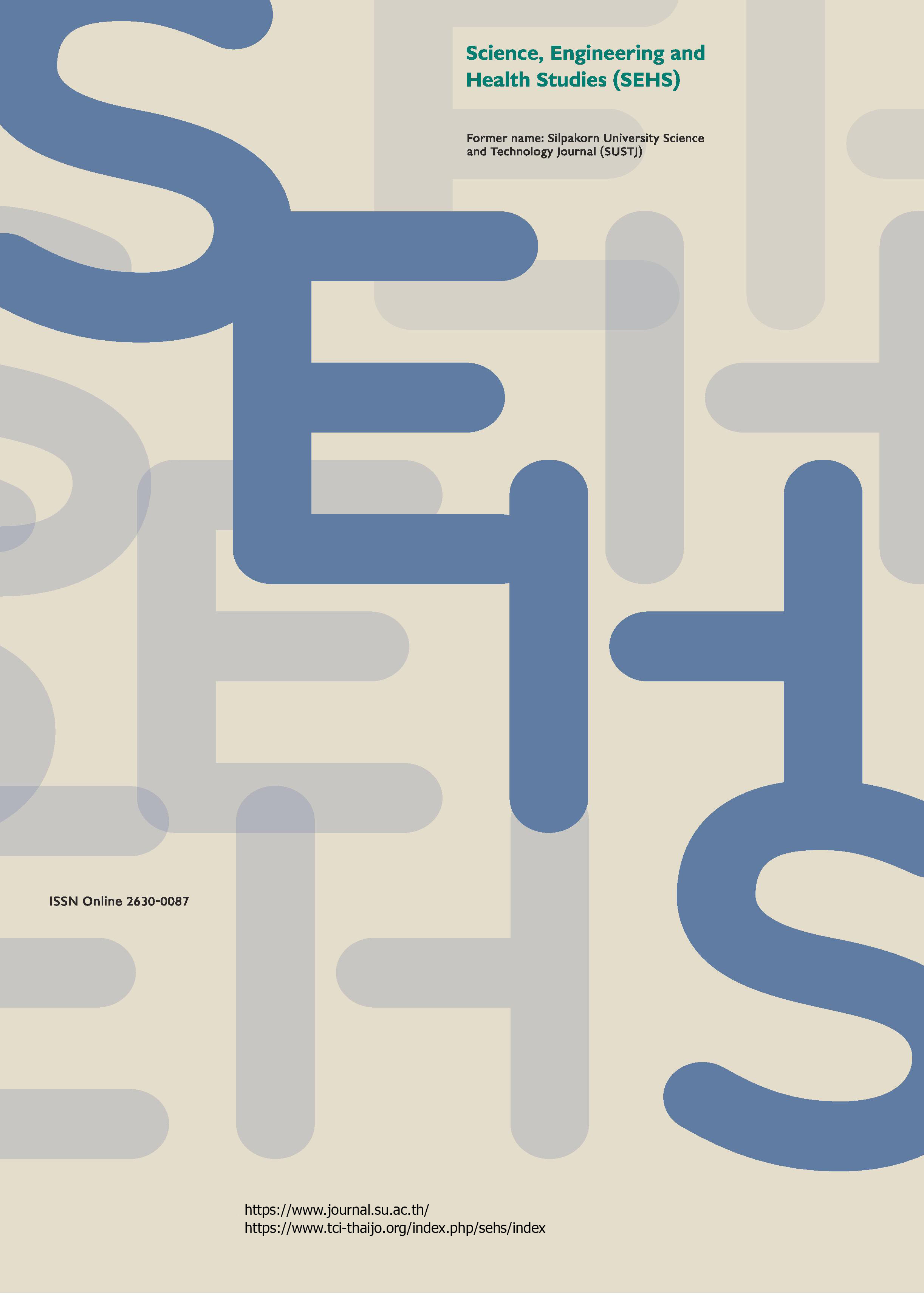A computational analysis of honeybee colony collapse prediction model and simulations
Main Article Content
Abstract
Honeybees play a critical role as natural pollinator and are essential to global food production. Monitoring honeybee population densities can provide valuable insights into the environmental status of a given region, although effectively carrying out such monitoring is challenging. To address this issue, this study focused on the development of a mathematical model to predict population density and detect potential colony collapse. The model utilized a set of effective arrays of differential equations that consider crucial parameters. Analyzing actual data using the model revealed that regions with higher flower densities experienced reduced vulnerability to unnatural deaths or diseases, while those with lower flower densities tended to have smaller populations. Furthermore, numerical simulations showed that unnatural death rates exerted the most significant impact on the model. In adverse environmental conditions, forager populations decline first, leading to decreased food availability and potential colony collapse. This model, as a highly practical tool, holds immense value for environmentalists seeking precise predictions of honeybee population density within their respective regions.
Downloads
Article Details

This work is licensed under a Creative Commons Attribution-NonCommercial-NoDerivatives 4.0 International License.
References
Chen, J., Messan, K., Messan, M. R., Degrandi-Hoffman, G., Bai, D., and Kang, Y. (2020). How to model honeybee population dynamics: Stage structure and seasonality. Mathematics in Applied Sciences and Engineering, 1(2), 91–125.
Coffey, M. F. (2007). Parasites of the Honeybee. Oak Park, Carlow: Teagasc, Crops Research Centre, pp. 34–36.
DeGrandi-Hoffman, G., Roth, S. A., Loper, G. L., and Erickson Jr., E. H. (1989). BEEPOP: A honeybee population dynamics simulation model. Ecological Modelling, 45(2), 133–150.
Dennis, B., and Kemp, W. P. (2016). How hives collapse: Allee effects, ecological resilience, and the honey bee. PloS One, 11(2), e0150055.
Di Pasquale, C., and Jacobi, C. M. (1998). Dynamics of pollination: a model of insect-mediated pollen transfer in self-incompatible plants. Ecological Modelling, 109(1), 25–34.
Feldman, T. S. (2006). Pollinator aggregative and functional responses to flower density: Does pollinator response to patches of plants accelerate at low-densities? Oikos, 115(1), 128–140.
Fitzgerald, D. W., Murphy, F. E., Wright, W. M. D., Whelan P. M., and Popovici E. M. (2015). Design and development of a smart weighing scale for beehive monitoring. In 26th Irish Signals and Systems Conference, Carlow, Ireland, June 24–25.
Jacobson, M. M., Tucker, E. M., Mathiasson, M. E., and Rehan, S. M. (2018). Decline of bumble bees in northeastern North America, with special focus on Bombus terricola. Biological Conservation, 217, 437–445.
Johnson, B. R. (2010). Division of labor in honeybees: form, function, and proximate mechanisms. Behavioral Ecology and Sociobiology, 64(3), 305–316.
Kang, Y., Blanco, K., Davis, T., Wang, Y., and DeGrandi-Hoffman, G. (2016). Disease dynamics of honeybees with varroa destructor as parasite and virus vector. Mathematical Biosciences, 275, 71–92.
Khoury, D. S., Barron, A. B., and Myerscough, M. R. (2013). Modelling food and population dynamics in honey bee colonies. PloS One, 8(5), e59084.
Klatt, B. K., Holzschuh, A., Westphal, C., Clough,Y., Smit, I., Pawelzik. E., and Tscharntke, T. (2014). Bee pollination improves crop quality, shelf life and commercial value. Proceedings of the Royal Society B: Biological Sciences, 281(1775), 20132440.
Lecocq, A., Kryger, P., Vejsnæs, F., and Jensen, A. B. (2015). Weight watching and the effect of landscape on honeybee colony productivity: investigating the value of colony weight monitoring for the beekeeping industry. PloS One, 10(7), e0132473.
Messan, K., Messan, M. R., Chen, J., Degrandi-Hoffman, G., and Kang, Y. (2021). Population dynamics of varroa mite and honeybee: Effects of parasitism with age structure and seasonality. Ecological Modelling, 440, 109359.
Moore, A. J., Breed, M. D., and Moor, M. J. (1987). The guard honey bee: ontogeny and behavioural variability of workers performing a specialized task. Animal Behaviour, 35(4), 1159–1167.
Page, R. E., Jr., and Metcalf, R. A. (1984). A population investment sex ratio for the honey bee (Apis mellifera L.). The American Naturalist, 124(5), 680–702.
Perry, C. J., Søvik, E., Myerscough, M. R., and Barron, A. B. (2015). Rapid behavioral maturation accelerates failure of stressed honey bee colonies. In Proceedings of the National Academy of Sciences, pp. 3427–3432. Illinois, United States.
Seeley, T. D. (1982). Adaptive significance of the age polyethism schedule in honeybee colonies. Behavioral Ecology and Sociobiology, 11, 287–293.


